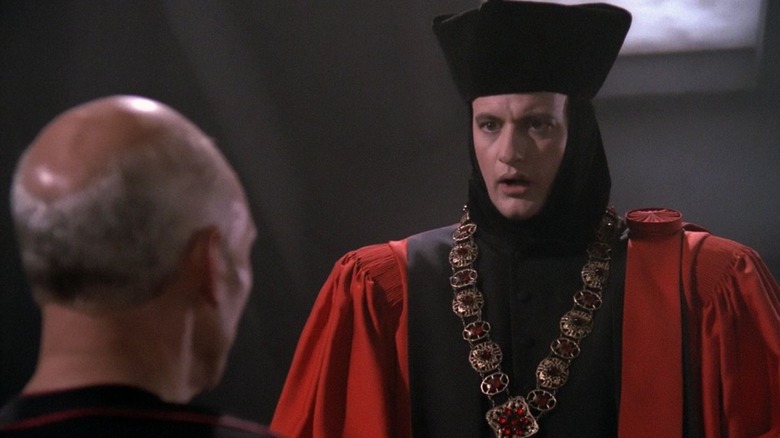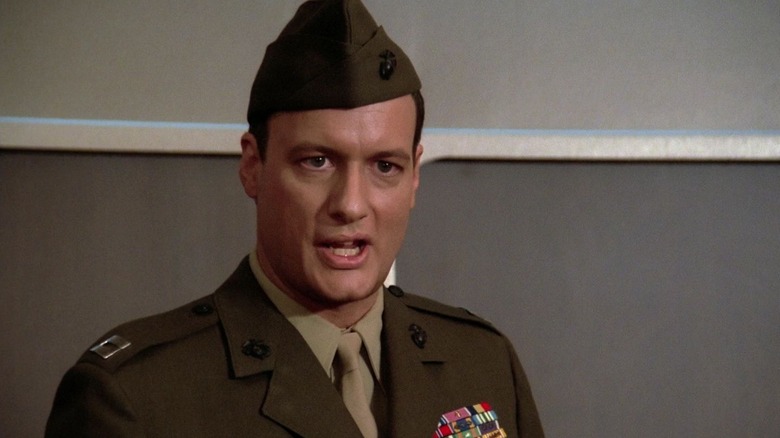
The creation of Q, the trickster god first seen on “Star Trek: The Next Generation,” was not born entirely of creative necessity. It seems that back in 1986, when “Next Generation” was still being developed, there was some debate whether the pilot episode — called “Encounter at Farpoint” — would be an hour long, 90 minutes, or a full two hours. If the show was 90 minutes, then teleplay writer D.C. Fontana would be paid a negotiated rate. If it was two hours, she would get a bonus.
Show creator Gene Roddenberry encouraged Fontana to keep the “Farpoint” script to 90 minutes, and she happily complied. But then, without working with Fontana, Roddenberry swept in and wrote 30 additional minutes of “bookend material” for the episode, expanding it to two hours. The “bookend material” was actually all the scenes involving Q (John de Lancie, who almost didn’t get the role). Roddenberry, because he was now the co-author of “Farpoint,” got the aforementioned bonus, and Fontana did not.
Q, however, did become a fan favorite, as the omnipotent cosmic brat served as a whimsical counterpoint to the ordinarily well-mannered and taciturn “Next Generation” characters. Q returned multiple times throughout the series, usually about once or maybe twice a season, to play tricks on Captain Picard (Patrick Stewart) and the Enterprise crew. Although he was invented for mercenary purposes, Q ended up becoming an invaluable part of the “Star Trek” franchise.
But Roddenberry didn’t want Q to get overexposed. A little Q goes a long way, it seems. At a 2024 pop culture convention called VirtualCon5 (an event covered by ScreenRant), de Lancie recalled speaking with Roddenberry about Q, and how the show creator felt that too much Q would have made him seem common and non-threatening. Roddenberry didn’t want Q to be a clown.
Gene Roddenberry didn’t want Q to be seen as a clown
De Lancie’s performance as Q is one for the ages, combining ineffable cosmic menace with lighthearted, charismatic humor. The character was so popular, that he even had guest spots on “Star Trek: Deep Space Nine” and “Star Trek: Voyager” as well. Q also played a major part in the second season of “Star Trek: Picard” just a few years ago. When de Lancie filmed “Encounter at Farpoint,” it seemed clear that he would return frequently. But, as Roddenberry iterated, seeing Q too often would turn him into the Great Gazoo from “The Flintstones.” De Lancie recalled:
“I come in, and I’m spinning. So the second time they brought me in, Gene said ‘You know what? I’m not gonna bring you back more than once a year. Because it occurred to us that then we would have a show where we’re just waiting for the clown to show up.”
Q was a comedic character to be sure, and he always did something outlandish with his godlike powers — like teleporting “Star Trek” characters into the world of Robin Hood — but he was never a buffoon. If anything, the post-religious characters of “Star Trek” merely dismissed his claims of divinity, seeing him more as an annoyance than a threat. The fact that he returned so infrequently made Trekkies know he was special.
Q died at the end of the second season of “Picard,” but he kind of exists outside of linear time, so he’s also still alive. Time will tell if he will return.



Leave a Reply